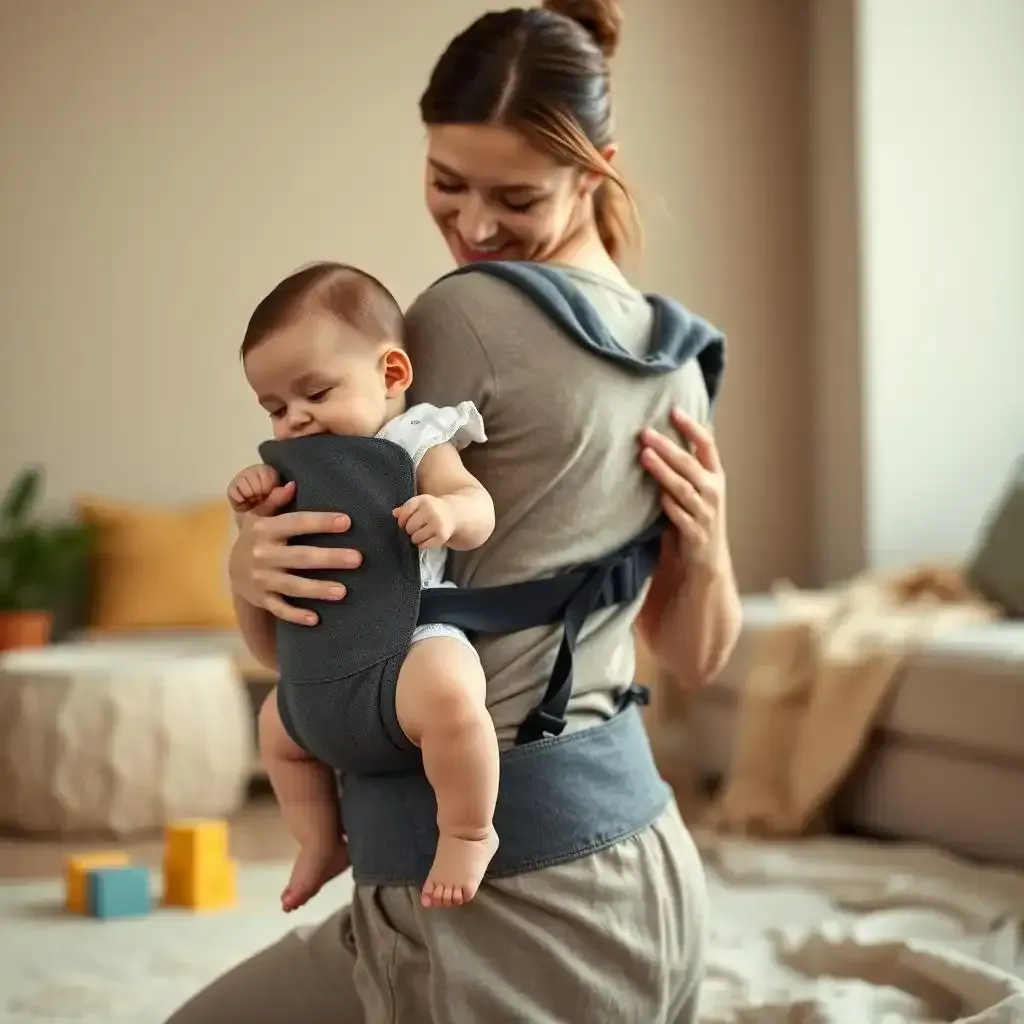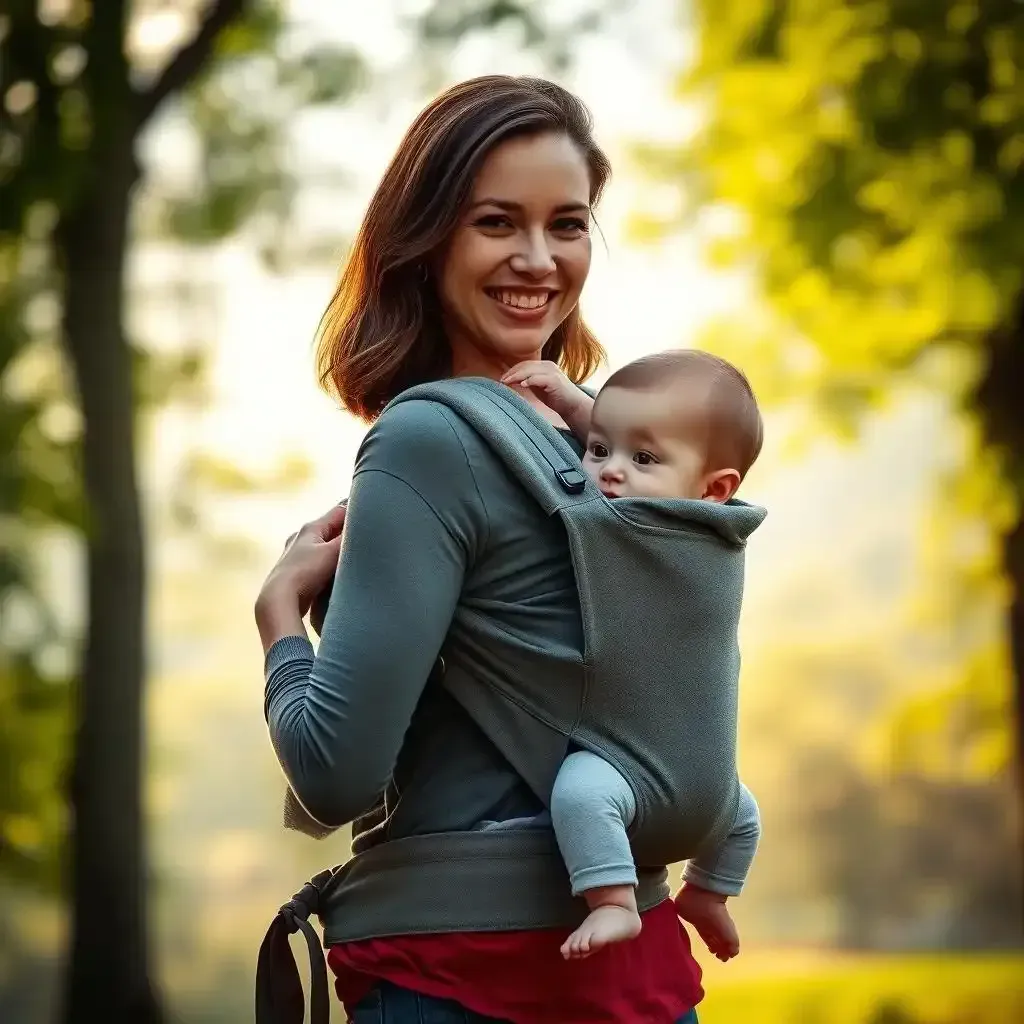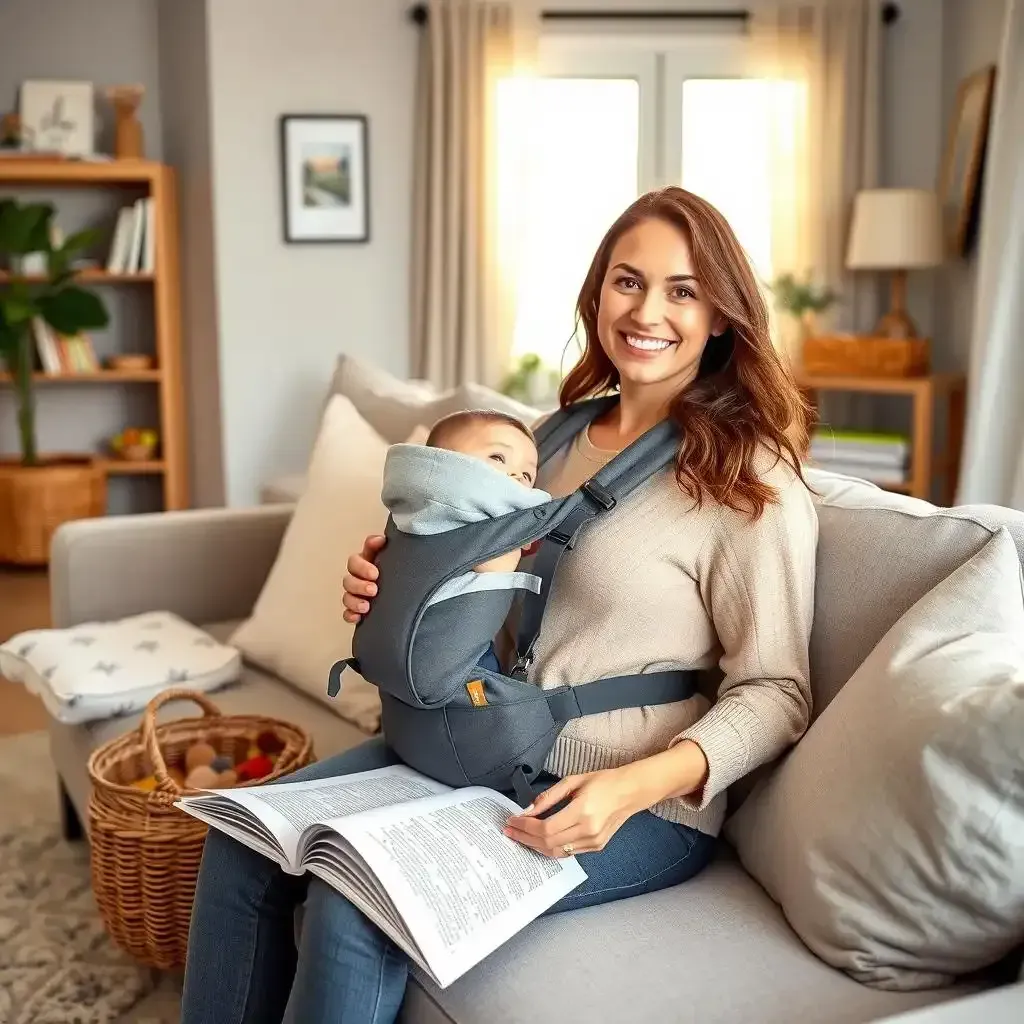Table of Contents
Navigating the world of baby carriers can feel like a jungle gym of straps and buckles. But fear not, new parents! This comprehensive guide from babyshop123.vn will walk you through everything you need to know about using a baby carrier backpack safely and confidently. We'll cover choosing the right backpack for your little one, mastering the art of getting them in and out, exploring different carrying positions, and troubleshooting those inevitable hiccups. Whether you're planning a scenic hike, a busy day of errands, or simply want a hands-free way to soothe your baby, learning how to use a baby carrier backpack correctly is key to a comfortable and safe experience for both you and your precious cargo. So, buckle up (literally!), and let's investigate into the world of babywearing!
Step | Action | Safety Note |
|---|---|---|
1 | Choose a carrier appropriate for your baby's age and weight. | Always check manufacturer's recommendations. |
2 | Securely position your baby in the carrier, ensuring their legs are through the leg openings and their back is supported. | Double-check all buckles and straps are fastened. |
3 | Adjust straps for a snug, comfortable fit for both you and your baby. | The carrier should be close to your back, distributing weight evenly. |
4 | Practice different carrying positions (front, back, hip) once comfortable. | Start with shorter periods and gradually increase duration. |
5 | Regularly inspect the carrier for wear and tear. | Replace if damaged. |
Choosing the Right Baby Carrier Backpack
Understanding Your Needs and Your Baby's
Picking the perfect baby carrier backpack feels a bit like choosing a superhero costume – you want something that's both super cool and super safe! First, think about your lifestyle. Are you a hiking enthusiast planning epic mountain adventures? Or are you more of a city slicker, navigating crowded streets and active markets? A carrier designed for long treks will be different from one built for quick trips to the grocery store. Your baby's age and size are also crucial. Check the manufacturer's recommendations carefully – there are minimum weight and age limits for a reason. Ignoring those is like trying to fit a grown-up into a toddler's car seat – it's not going to end well. And while you're at it, consider your own build. A carrier that's comfortable for a six-foot-tall person might not be so comfy for someone who's five foot two.
- Consider your lifestyle: hiking, city life, etc.
- Check your baby's age and weight – safety first!
- Think about your own size and comfort.
Key Features to Look For
Once you've got a handle on your needs, it's time to look at the specifics. Think of the features as superpowers for your carrier. A good hip belt is essential – it's like a superhero's utility belt, distributing weight evenly and saving your back from aches. Adjustable straps are another must-have; they allow you to customize the fit for both you and your growing baby. Look for breathable fabric, especially if you live in a warmer climate – nobody wants a sweaty baby (or a sweaty parent!). Padding is also important for your baby's comfort and support. And finally, check out the safety features – buckles that are easy to use but hard to accidentally unfasten are key. You don't want a surprise mid-hike escape!
Feature | Importance |
|---|---|
Hip Belt | Even weight distribution, protects your back |
Adjustable Straps | Customizable fit for you and baby |
Breathable Fabric | Keeps you and your baby cool |
Padding | Comfort and support for baby |
Safety Features | Secure buckles, etc. |
Safe Baby Carrier Backpack Use: A Step-by-Step Guide
Safe Baby Carrier Backpack Use A Step By Step Guide
Okay, so you've got your awesome baby carrier backpack – congrats! Now, let's get your little one strapped in safely. It's like learning a new dance move, but way more important. First, make sure your baby’s at least six months old and can hold their head up steady. Their necks are still pretty wobbly before that, and you don’t want any head-bobbing mishaps. Think of it like this: a six-month-old is more like a sturdy little pumpkin than a newborn jellybean.
- Check the age and weight limits on your carrier’s instructions – this isn't a suggestion, it's a rule!
- Make sure your baby is awake and alert (a sleepy baby might slip).
- Have someone help you, especially at first. Four hands are better than two!
Next, gently place your baby into the carrier. Their little legs should go through those leg openings, and their back should rest snugly against the carrier’s back panel. Think of it as giving them a super-comfy hug. Now, buckle up everything – the waist belt, shoulder straps, and those leg straps. Double-check everything is snug but not too tight. You want a secure fit, not a baby sausage!
Step | Action | Important Note! |
|---|---|---|
1 | Place baby in carrier. | Legs through leg openings, back against the panel. |
2 | Fasten all buckles. | Double check everything is secure. |
3 | Adjust straps for a snug fit. | Neither too tight nor too loose. |
Once everything is buckled, adjust the shoulder straps and waist belt. You want the weight to be distributed evenly across your hips and shoulders, not all on your back. Imagine it as balancing a backpack – if it’s all on your shoulders, you’ll get a backache. If you’re using the carrier for a longer period, take breaks and readjust as needed. Your baby will probably squirm around a bit, so regular checks will keep them comfy. It's like constantly tuning a guitar; it needs a little tweaking every now and then.
"A properly fitted baby carrier is like a well-tuned instrument; it plays a beautiful melody of comfort and security." - Dr. CarryOn (fictional expert)
Finally, before you head off on your journey, do a quick test run. Walk around a bit, bend over, and see how the carrier feels. If anything feels off – too tight, too loose, or just plain uncomfortable – adjust it before you’re out and about. Remember, you’re both in this together. A little pre-trip check is like doing a safety check on a car before a long trip. You want to make sure everything is running smoothly!
- Test the carrier before heading out.
- Take breaks and readjust as needed.
- Listen to your body and your baby's cues.
Mastering Different Baby Carrier Backpack Positions
Mastering Different Baby Carrier Backpack Positions
Front Carry: The Snuggle Position
The front carry is your go-to for newborns and smaller babies. It's all about that cozy, close-to-the-heart association. Think of it like a human-powered baby sling, super snuggly! To get started, position your little one facing you, making sure their back is straight against the carrier's support panel. Secure all the straps – the hip belt is like your anchor, distributing the weight evenly so you don't end up with a crick in your neck. Adjust the straps so your baby is snug but not constricted. Imagine it's like a comfy hug – secure, but with room to breathe. This position is perfect for feeding, soothing, or just enjoying some face-to-face time. It's great for shorter walks or errands, but it might get a bit heavy for longer adventures.
- Baby faces you.
- Secure all straps.
- Adjust for a snug, comfortable fit.
Back Carry: The Adventurer's Stance
Once your little one's a bit bigger and more secure in their head control (around 6 months or when they hit the weight limit – always check the instructions!), the back carry opens up a whole new world of possibilities! This position is like giving your baby a bird's-eye view of the world. It's perfect for longer hikes or outings, as it keeps the weight nicely balanced and your hands completely free – you're basically a human pack mule, but way cuter! To switch to the back carry, you'll need a bit of help, especially at first. Have someone assist you in lifting your baby into the carrier. Once they're in, make sure their back is against the panel and everything's buckled up tight. Then, adjust the straps to distribute the weight evenly. It's like packing a backpack for a trip – you want everything balanced to avoid any strain. The back carry offers amazing freedom, but remember to take breaks and check on your little one regularly. Sometimes they might just want a cuddle, even if they have a great view!
Position | Pros | Cons |
|---|---|---|
Front Carry | Close proximity, good for feeding, soothing | Can be heavy for long periods, restricts movement |
Back Carry | Hands-free, good for longer outings, better weight distribution | Requires more skill, less interaction with baby |
Troubleshooting Common Baby Carrier Backpack Issues
Troubleshooting Common Baby Carrier Backpack Issues
The "My Baby's Slipping!" Scenario
Okay, so you've got your little one all strapped in, and suddenly, they're starting to slide down. Don't panic! This is more common than you think. It’s like trying to keep a greased watermelon on a slide; it’s not going to stay put without some effort. First, double-check all the straps. Are they snug enough? Sometimes, a slightly loose strap can be the culprit. Next, make sure your baby's back is sitting correctly against the carrier's back panel. If they're slumped, readjust them so they're sitting upright. Think of it like building a sandcastle – you need a solid base. Finally, if they're still sliding, it might be a sign that the carrier isn't quite the right fit for your little one. Every baby is different, you know!
- Check all straps for tightness.
- Ensure your baby’s back is against the panel, not slumped over.
- Consider if the carrier is the right size for your baby.
The "My Back is Killing Me!" Dilemma
Carrying a baby is hard work, and even with the best carrier, you might end up with a sore back. It's like carrying a backpack full of bricks – eventually, your back will protest! The key here is proper weight distribution. Make sure the hip belt is snug and sitting correctly on your hips. This is crucial! You want your hips to take the brunt of the weight, not your shoulders. Also, ensure the shoulder straps are adjusted correctly – you shouldn't feel all the weight on your shoulders. If you do, you're doing it wrong! Finally, take breaks often. Even short rests can make a big difference. Think of it as a marathon, not a sprint. You need to pace yourself.
Problem | Solution |
|---|---|
Sore back | Ensure proper weight distribution on hips, adjust straps, take breaks. |
Baby slipping | Check and tighten straps, ensure baby's back is properly supported. |
Overheating | Choose a breathable carrier, take breaks in shaded areas. |
Final Thought
Mastering the art of the baby carrier backpack takes practice, patience, and a dash of confidence. Remember, always prioritize safety and comfort for both you and your little one. With a little practice and the guidance provided in this guide, you'll be confidently navigating the world, hands-free and happy, with your baby nestled securely in your baby carrier backpack. Happy travels!
